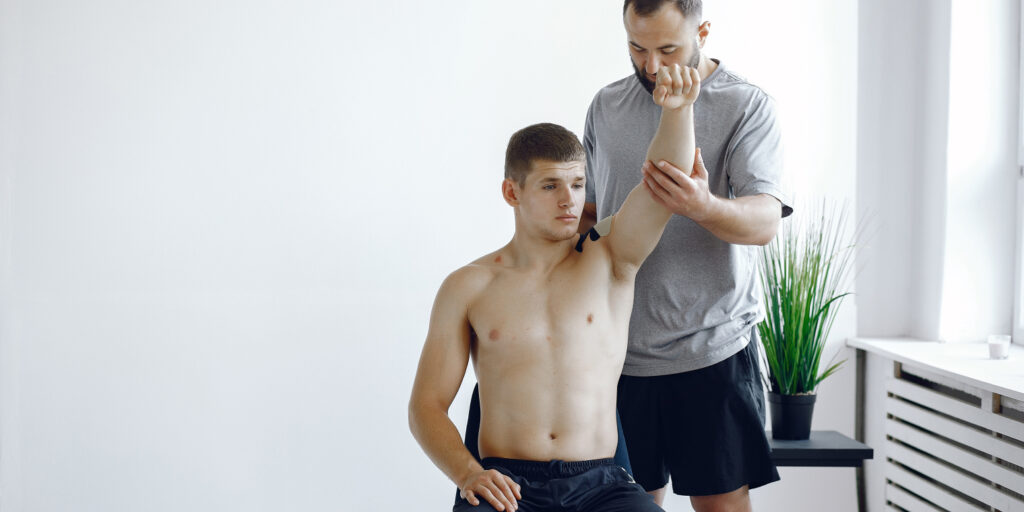Managing Body Dysmorphia in Gay Men
By Bill Benson · May 31, 2023

Body dysmorphia, a condition characterized by an obsessive preoccupation with one’s appearance and perceived flaws, can affect individuals across various demographics.
In recent years, the LGBTQ+ community, particularly gay men, have spoken out about their experiences with body dysmorphia.
Understanding the multifaceted nature of this condition, which includes developmental trauma and societal pressures, is essential. This article aims to shed light on the interplay between developmental trauma, societal expectations, and body dysmorphia in gay men while providing tools for managing and overcoming this distressing condition.
Understanding Developmental Trauma and Societal Pressures
Developmental trauma refers to adverse experiences during childhood or adolescence that profoundly impact an individual’s emotional, psychological, and social development. For gay men, growing up in environments that may not have been accepting or affirming their sexual orientation can contribute to developmental trauma. These experiences may include bullying, rejection, discrimination, or internalized homophobia. Such trauma can result in low self-esteem, self-worth issues, and body image concerns, manifesting as body dysmorphia.
Additionally, gay men face unique societal pressures that can exacerbate body dysmorphia. The gay community often strongly emphasizes physical appearance, with societal standards perpetuating the idea that lean, muscular bodies are ideal. This pressure to conform to a specific aesthetic can lead to feelings of inadequacy, low self-esteem, and body dissatisfaction, further fueling the development of body dysmorphia.
Tools for Managing Body Dysmorphia
Seek Professional Help:
When addressing body dysmorphia influenced by developmental trauma and societal pressures, seeking professional assistance is vital. Mental health professionals specializing in trauma and body image issues can provide a safe and supportive space to explore the underlying causes of body dysmorphia. Therapeutic approaches such as cognitive-behavioral therapy (CBT), EMDR, or somatic experiencing can help individuals process trauma, challenge negative thoughts, and develop healthier perspectives about their bodies.
Address Trauma and Challenge Distorted Thinking:
Acknowledging and addressing developmental trauma is essential in managing body dysmorphia. Through therapy, individuals can work through past traumas, develop coping mechanisms, and challenge distorted thinking patterns. Cognitive restructuring exercises can help challenge negative thoughts and beliefs about body image, fostering self-compassion and self-acceptance.
Cultivate Self-Care and Emotional Regulation:
Managing body dysmorphia involves prioritizing self-care and emotional well-being. Engage in self-soothing practices like mindfulness meditation, deep breathing exercises, or engaging in creative outlets. Regular exercise, maintaining a balanced diet, and ensuring adequate rest can positively impact physical and mental health. Taking care of oneself holistically helps reduce stress and enhances emotional resilience.
Curate Media Exposure and Foster Positive Influences:
Limit exposure to media that perpetuates unrealistic body standards and triggers feelings of inadequacy. Curate your social media feed to include diverse body representations and follow accounts that promote body positivity and self-acceptance. Surround yourself with positive influences, supportive friends, and LGBTQ+ communities that uplift and appreciate individuals for their unique qualities beyond physical appearance. Remember, comparison is a thief of joy, so focus on your own progress and self-improvement rather than comparing yourself to others.
Build a Supportive Network:
Connecting with others who understand and empathize with your experiences can be immensely helpful. Seek support groups or online communities where you can share your struggles and find encouragement. Building a solid support network that includes friends, loved ones, and mental health professionals can provide emotional support and validation on your journey toward healing.
Managing Body Dysmorphia – Final Thoughts
Body dysmorphia in gay men is a complex issue influenced by developmental trauma and societal pressures. Understanding the impact of adverse experiences during childhood or adolescence, as well as the unrealistic beauty standards perpetuated within the gay community, is crucial for addressing and managing this condition. By seeking professional help, addressing trauma, challenging distorted thinking, practicing self-care, curating media exposure, and building a supportive network, gay men can begin the journey toward healing and self-acceptance. Remember, every individual is unique, and true happiness comes from embracing oneself beyond physical appearance. With the right tools and support, it is possible to overcome body dysmorphia and foster a healthier and more positive relationship with one’s body.
